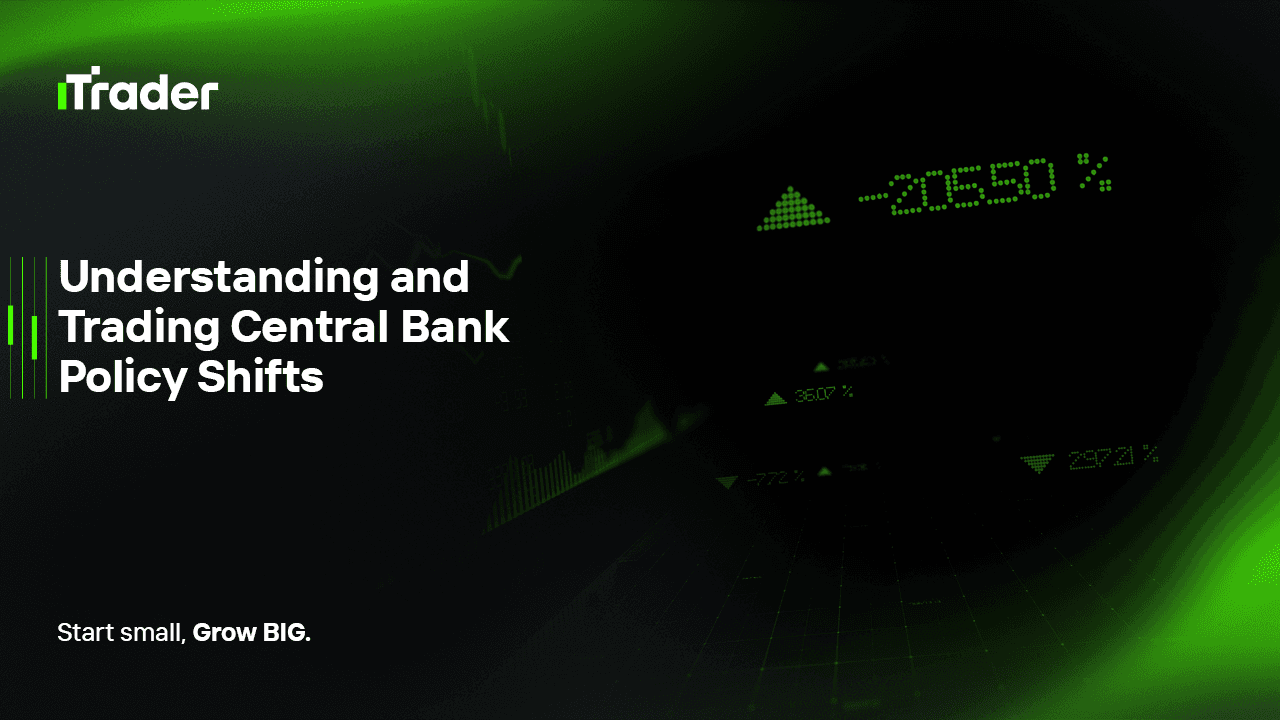2025-08-28
The forex market is one of the most sensitive arenas in global finance. Exchange rates not only respond to day-to-day technical fluctuations but also to major macroeconomic policy decisions. Among these, the most powerful drivers are monetary policy shifts by central banks.
Institutions like the U.S. Federal Reserve (Fed), European Central Bank (ECB), Bank of Japan (BOJ), and Bank of England (BoE) regularly influence global capital flows through interest rate decisions, quantitative easing (QE), balance sheet adjustments, and policy guidance. These decisions ripple across the forex market, creating both risks and opportunities.

For prop traders, understanding and anticipating central bank policy shifts is not just about catching a trade—it’s a strategic edge. Prop firm challenges measure not only short-term profitability but also how effectively traders manage risk in volatile, news-driven conditions.
Central banks operate with three main goals:
They achieve these through various policy tools:
Interest rates are the most direct channel through which central banks influence currency values.
This concept underpins the classic Interest Rate Differential strategy, where traders position based on relative yields between economies.
Markets react not only to the decision itself but also to how it aligns with prior expectations:
Central bank policy affects currencies via multiple channels:
In certain cases, central banks intervene directly, buying or selling their currency to stabilize exchange rates. The BOJ, for instance, has stepped in to curb excessive yen weakness.
When central banks follow opposite policy paths, strong forex opportunities emerge. Example: Fed tightening vs. ECB easing led to EUR/USD weakness in 2014–2015.
For prop traders, the risk around central bank events is heightened volatility. Effective practices include:
The Swiss National Bank removed its EUR/CHF floor, causing the franc to surge ~30% within minutes. Many retail and institutional traders were wiped out.
Successive Fed hikes boosted USD strength across major pairs, rewarding traders who anticipated the policy cycle.
Policy tweaks and interventions triggered strong yen volatility, creating both risks and short-term opportunities.
Since firms evaluate risk discipline, traders must:
Prop traders need to interpret not just the numbers but also the tone of central bank communication. A single phrase in a press conference can move markets. Skills include:
Central bank monetary policy is one of the dominant forces shaping forex markets. For prop traders, mastering this area provides both protection against unnecessary risk and an edge in capturing high-probability setups.
Ultimately, central bank policy sets the rules of the forex game. Traders who can read, anticipate, and adapt to these rules are far more likely to pass prop firm challenges and thrive in live market conditions.
© 2025 iTrader Global Limited|会社登録番号:15962
iTrader Global Limitedは、コモロ連合のアンジュアン自治島ムツァムドゥのHamchakoに所在し、コモロ証券委員会によって認可・規制を受けています。ライセンス番号は L15962/ITGL です。
iTrader Global Limitedは「iTrader」の商号で運営しており、外国為替取引業務を行う許可を受けています。会社のロゴ、商標、ウェブサイトはすべて iTrader Global Limited の専有財産です。
iTrader Global Limitedの他の子会社には、iTrader Global Pty Ltd(オーストラリア会社登録番号(ACN):686 857 198)が含まれます。 この会社は、Opheleo Holdings Pty Ltd(オーストラリア金融サービスライセンス(AFSL)番号:000224485)の認可を受けた代表者(AFS代表番号:001315037)です。登録住所は Level 1, 256 Rundle St, Adelaide, SA 5000 です。
免責事項: この法人は、本ウェブサイト上で取引される金融商品の発行者ではなく、それらに対して責任を負いません。
リスク警告: 差金決済取引(CFD)は、レバレッジにより資本の急速な損失リスクが高く、すべての利用者に適しているとは限りません。
ファンド、CFD、その他の高レバレッジ商品を取引するには、専門的な知識が必要です。
調査によると、84.01%のレバレッジ取引者が損失を被っています。取引を開始する前に、リスクを十分に理解し、資金を失う可能性があることを認識してください。
iTraderは、レバレッジ取引によるリスク、損失、またはその他の損害について、個人または法人に対して一切の責任を負わないことを明言します。
利用制限: iTraderは、法律、規制、または政策によりこのような活動が禁止されている国の居住者を対象として、本ウェブサイトやサービスを提供していません。